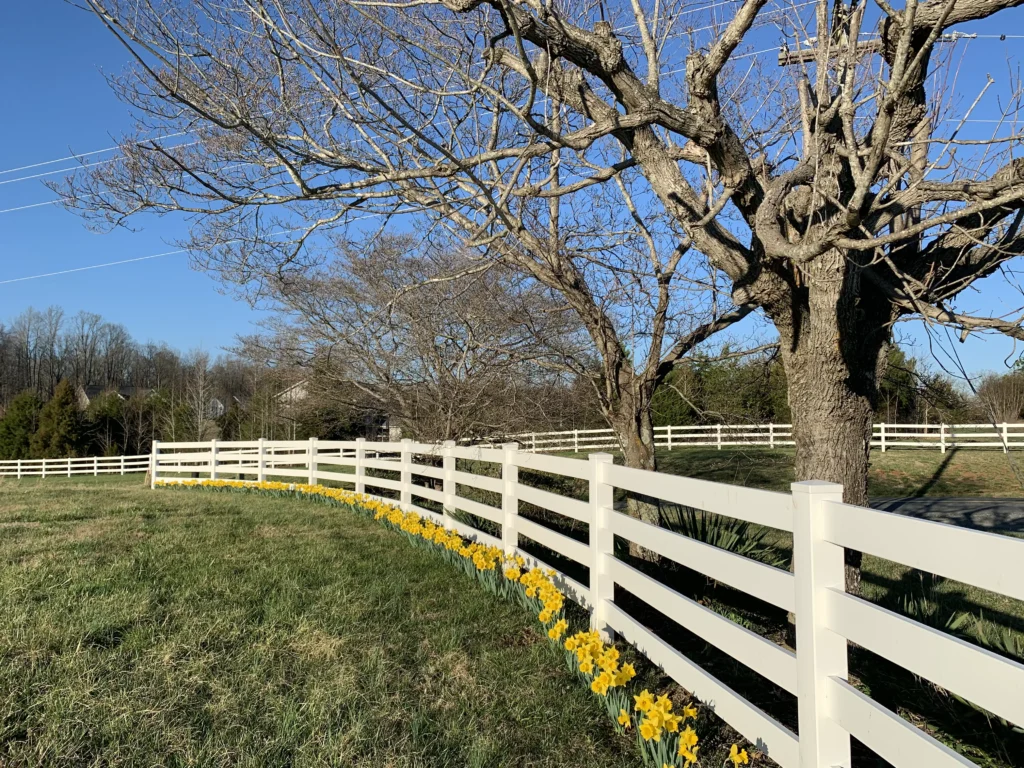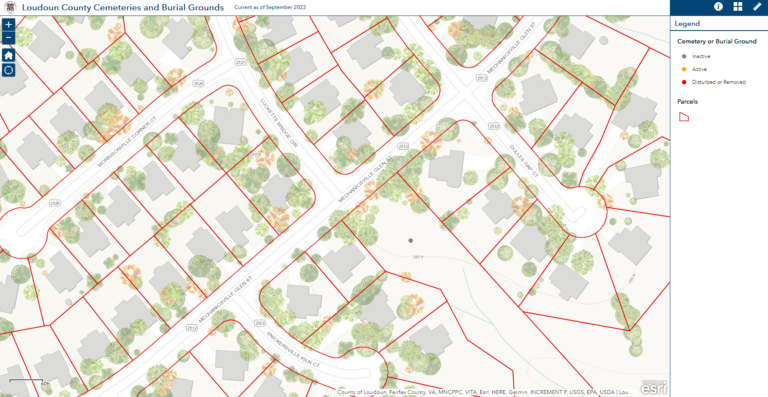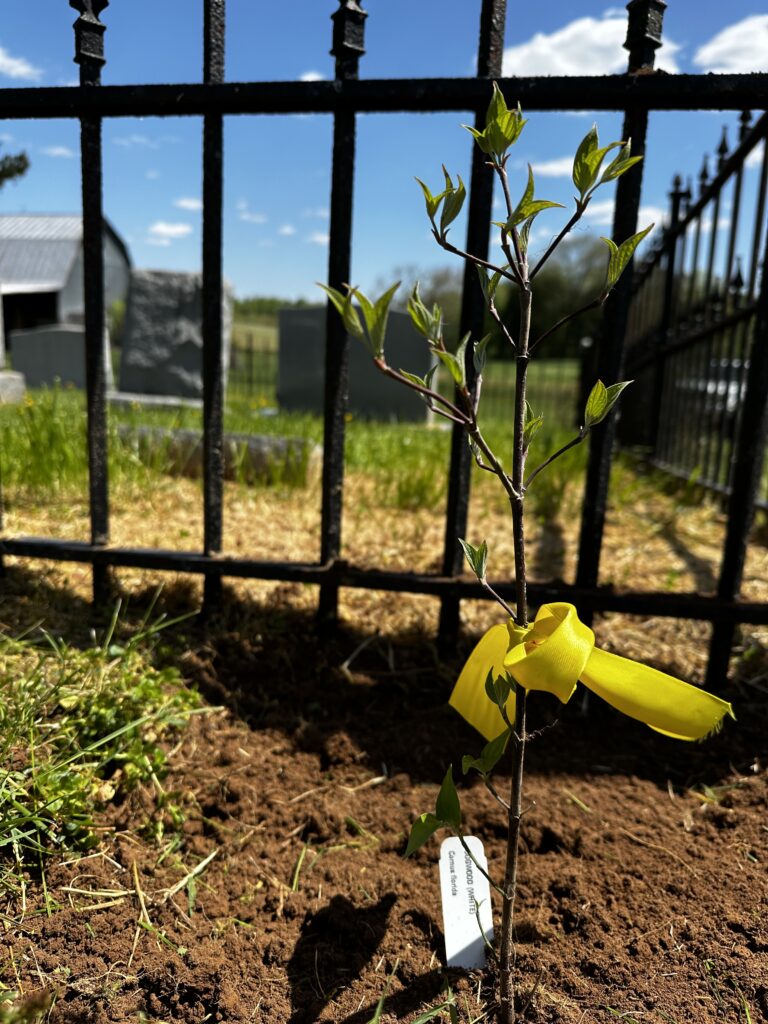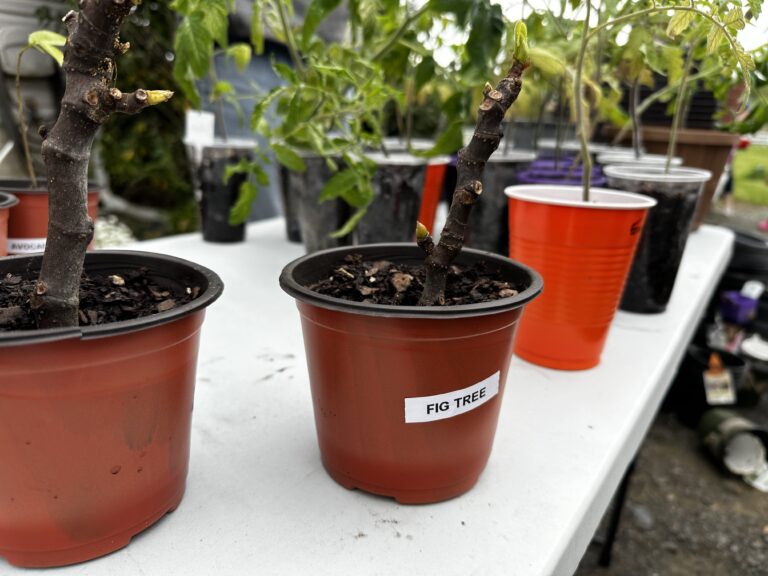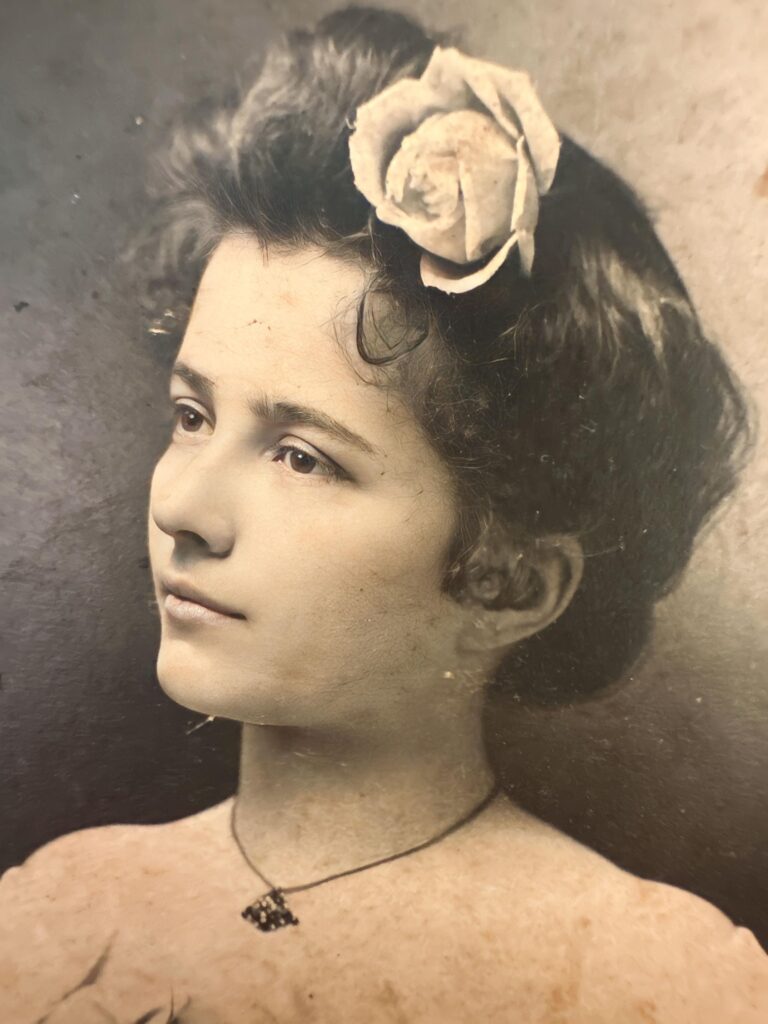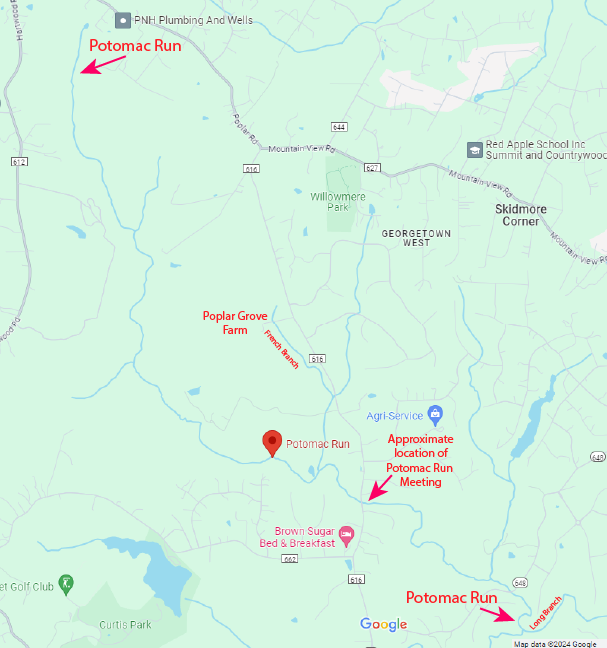Newly married Sarah Curtis French, daughter of George Curtis, was given what had been known as the the Poplar Settlement when she married James French in 1830. The farm already had a Quaker-built stone house located on the property:
The house that Sallie came to as a young bride was very well built for houses of its time. Facing south, and about 200 feet from the road, the Old Stone House, as it came to be known, was 3 stories tall (including the basement and the attic), with two rooms on each floor.
‘Each room had a closet that would be big enough today to put a small bedroom suite in,’ Fitzhugh says with a laugh. This seems rare, as homes back then were taxed according to how many rooms they had, and closets counted, too.
‘The walls were 3 feet thick,’ says Fitzhugh, because the Quakers (who actually built the house) were ‘building then against Indians and everything else, you know.’
Poplar Grove Farm included the Old Stone House, the Spring House (also stone) and, subsequently, another building known as the kitchen. Before that, the kitchen had been in the basement but was relocated for fire safety. Two of the three structures are still standing.
Curtis Family Roots Run Deep in Stafford, https://fredericksburg.com/curtis-family-roots-run-deep-in-stafford/article_1ed7ca5e-1e13-50fb-859c-bc4d74132fa4.html
The Old Stone House was removed sometime in the 1800s. The old summer kitchen and spring house are still standing at Poplar Grove Farm.
John French Fitzhugh describes the Old Stone House
Our Uncle John F. Fitzhugh was one of thirteen oral history interviews performed with Stafford County residents for a 1986 Central Rappahannock Regional Library project. During part of that interview, Uncle John mentions the Old Stone House:
John: Well, originally this country–this neighborhood ’round here was settled by a group of Quakers that moved in here and from what I’ve heard just by word of mouth, I don’t think there’s any records at the courthouse, they were destroyed in the Civil War. But I understand there was six families of Quakers that moved in here and they always picked sites by a good ever-running spring and they built stone houses and stone spring houses. And this was one of them and evidently one of, from what I understand, was the biggest house. There’s one-house left standing where Milton Christy now lives. And these Quakers couldn’t get enough in here to make a very strong organization, so they, from what I understand, they left around the latter part of 1700’s or the early 1800’s and went to Ohio and formed a settlement and all of them have gone from around here, but the old Quaker burying ground is down here on, just to the right of Milton Christy’s lane–up on the hill in the thicket there. There’s no tombstones except just fieldstones, but there is no inscriptions on them. And I don’t know the names of the–any of the names of those people. But I just heard that through my family and just the ones who lived around here a long time.
Sally Lou Fitzhugh: Tell her what you know about Poplar Grove–the name of this farm.
John: Well, this place was bought–Poplar Grove–was bought from those Quakers by George Curtis and he gave it to his daughter, Sarah, or Sally as she was sometimes called, who was my great-grandmother. And she raised her family and lived here until she died around 1870, I think, something like that. And it has been in my family ever since.
Stafford County Oral History Project, Interview of JOHN FITZHUGH, by EILLEN CHARTTERS. April 12, 1986. https://www.librarypoint.org/wp-content/uploads/sites/60/2018/06/John_Fitzhugh.pdf

